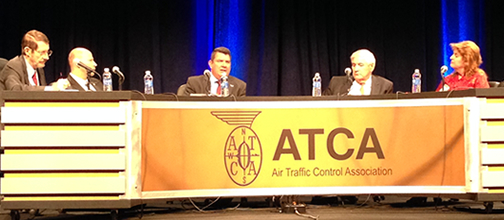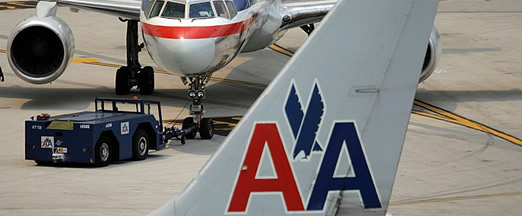Public or private? The future of the FAA
25 October 2013The 58th ATCA Annual Conference and Exposition, held at Washington DC’s National Harbor is well known as the pre-eminent event for the US air traffic control community.
The conference offers debate on many topics, while the exposition provides attendees the opportunity to visit the many booths staffed by leading companies within our sector.
NATS attends both as exhibitor, promoting its commercial services into the US market to aid performance delivery, efficiency, safety and resilience into airport and airspace environments, but also as a European air navigation service provider supporting parallel CANSO activities within the conference.
This year I was invited to join a panel alongside NAV CANADA President John Crichton, Paul Rinaldi from the NATCA union, Sharon Pinkerton from Airlines for America and Brian Oakley from Scully Capital. Moderated by the Reason Foundation’s Robert Poole, the debate centred on alternative funding models for the FAA in light of its recent challenges. It explored the not for profit model of NAV CANADA and in part contrasted it to the UK’s PPP model that we have operated for the past 11 years.
Both models have shown strong progress, most importantly with safety and performance improved since their change in ownership. Do I think either model is correct for the FAA? Not necessarily. The discussion I heard at the conference underpinned the view that the ATC community in the US is open and ready for change. Paul Rinaldi was very clear that everyone in the US wants a growing, thriving air traffic control system.

I’m not cheerleading the UK’s PPP model as the solution for the US, but on the strength of the panel discussion I’m heartened that open minds will welcome change. And that stakeholders are ready for a level of change that will allow the concepts of NextGen to be genuinely taken on, with technology being allowed to play its part alongside people and governance to facilitate transformation.
The ATCA conference and exhibition showed that the the US ATC operation is staffed by dedicated people who are aware of the challenges of NextGen but are tired of a governance model that has seen 23 budget extensions and a number of shutdowns in recent memory, the most recent being the 16 day shutdown earlier this month.
As I shared with the audience, the NATS model is one of a number of viable alternatives. Clearly the FAA is a different shape and scale of business to NATS and NAV CANADA with its own unique demands, but changing the model to securing a revenue stream such that the FAA can function and plan with a degree of certainty would appear to be a logical step forwards.
Whether a not for profit or a reasonable return model is the right one is a matter for Congress to decide upon. I hope that if the decision is taken to explore alternative self-funding models we can continue to provide some insight into successful economic frameworks.
Comments
Please respect our commenting policy and guidelines when posting on this website.



